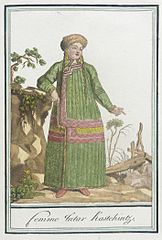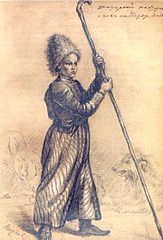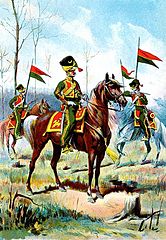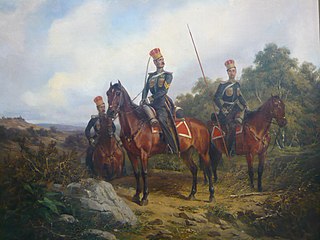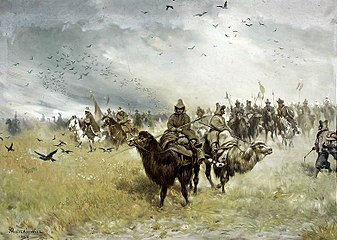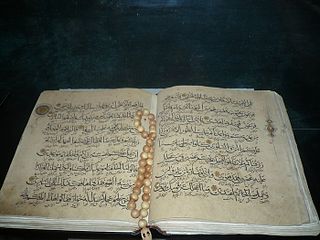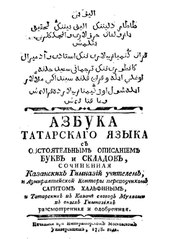Tatars
татарлар, tatarlar | |
|---|---|
 | |
| Total population | |
Total: ~7.3 million[1]
| |
| Regions with significant populations | |
Russia
| 5,319,877[9] |
| Ukraine
| 319,377[10] |
| Uzbekistan | ~239,965[11] (Crimean Tatars) |
| Kazakhstan | 208,987[12] |
| Turkey | 500,000–6,900,000[4][5][6][13] |
| Afghanistan | 100,000[14] (estimate) |
| Turkmenistan | 36,655[15] |
| Kyrgyzstan | 28,334[16] |
| Azerbaijan | 25,900[17] |
| Romania | ~20,000[18] |
| United States | 10,000[19] |
| Belarus | 3,000[20] |
| France | 700[21] |
| Switzerland | 1,045+[22] |
| China | 3,556[23] |
| Canada | 56,000[24] (incl. those of mixed ancestries) |
| Poland | 1,916[25] |
| Bulgaria | 5,003[26] |
| Finland | 600–700[27] |
| Japan | 600–2000[28] |
| Australia | 900+[29] |
| Czech Republic | 300+[30] |
| Estonia | 2,000[31] |
| Latvia | 2,800[3] |
| Lithuania | 2,800–3,200[32][33][34] (incl. all of Lipka, Crimean and Volga origins) |
| Iran | 20,000–30,000[35] (Volga Tatars) |
| Languages | |
| Kipchak languages | |
| Religion | |
| Predominantly Sunni Islam with Eastern Orthodox minority | |
| Related ethnic groups | |
| Other Turkic peoples, especially other speakers of Kipchak languages | |

The Tatars[36] (/ˈtɑːtərz/ TAH-tərz),[37] formerly also spelt Tartars,[36] is an umbrella term for different Turkic ethnic groups bearing the name "Tatar" across Eastern Europe and Asia.[38] Initially, the ethnonym Tatar possibly referred to the Tatar confederation. That confederation was eventually incorporated into the Mongol Empire when Genghis Khan unified the various steppe tribes.[39] Historically, the term Tatars (or Tartars) was applied to anyone originating from the vast Northern and Central Asian landmass then known as Tartary, a term which was also conflated with the Mongol Empire itself. More recently, however, the term has come to refer more narrowly to related ethnic groups who refer to themselves as Tatars or who speak languages that are commonly referred to as Tatar.
The largest group amongst the Tatars by far are the
While also speaking languages belonging to different Kipchak sub-groups, genetic studies have shown that the three main groups of Tatars (Volga, Crimean, Siberian) do not have common ancestors and, thus, their formation occurred independently of one another. However, it is possible that all Tatar groups have at least partially the same origin, mainly from the times of Golden Horde.[40][41]
Many noble families in the Tsardom of Russia and Russian Empire had Tatar origins.[42][43]
Etymology
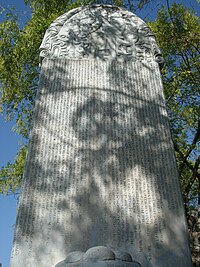
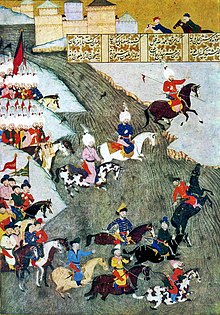
Tatar became a name for populations of the former Golden Horde in Europe, such as those of the former Kazan, Crimean, Astrakhan, Qasim, and Siberian Khanates. The form Tartar has its origins in either Latin or French, coming to Western European languages from Turkish and the Persian language (tātār, "mounted messenger"). From the beginning, the extra r was present in the Western forms and according to the Oxford English Dictionary this was most likely due to an association with Tartarus.[44][45]
The Persian word is first recorded in the 13th century in reference to the hordes of Genghis Khan and is of unknown origin; according to the Oxford English Dictionary it is "said to be" ultimately from tata. The Arabic word for Tatars is تتار. Tatars themselves wrote their name as تاتار or طاطار.
Ochir (2016) states that Siberian Tatars and the Tatars living in the territories between Asia and Europe are of Turkic origin, acquired the appellation Tatar later, and do not possess ancestral connection to the Mongolic Nine Tatars, whose ethnogenesis involved Mongolic people as well as Mongolized Turks who had been ruling over them during the 6–8th centuries.[46] However, genetic testing (Y-DNA) of Tom Tatars shows that at least some groups of Siberian Tatars have Mongolic origin.[47] Pow (2019) proposes that Turkic-speaking peoples of Cumania, as a sign of political allegiance, adopted the endonym Tatar of their Mongol conquerors, before ultimately subsuming the latter culturally and linguistically.[48]
All Turkic peoples living within the Russian Empire were named Tatar (as a Russian
- Kipchak groups
- Kipchak–Bulgar branch or "Tatar" in the narrow sense
- Kipchak–Cuman branch
- Crimean Tatars
- Karachays and Balkars: Mountain Tatars
- Kumyks: Daghestan Tatars
- Crimean Karaites: Crimean Karaite Tatars / Karaite Tatars
- Krymchaks: Crimean Krymchak Tatars / Krymchak Tatars
- Kipchak–Nogai branch:
- Nogais: Nogai Tatars
- Siberian Tatars
- Siberianbranch:
- Oghuz branch
- Azerbaijanis: Caucasus Tatars (also Transcaucasia Tatars or Azerbaijan Tatars)
The term is originally not just an exonym, since the Polovtsians of Golden Horde called themselves Tatar.[51] It is also an endonym to a number of peoples of Siberia and Russian Far East, namely the Khakas people (тадар, tadar).[52]
Languages

Eleventh-century Kara-khanid scholar Mahmud al-Kashgari noted that the historical Tatars were bilingual, speaking other Turkic languages besides their own.[53]
The modern Tatar language, together with the Bashkir language, forms the Kypchak-Volga-Ural group within the Kipchak languages (also known as Northwestern Turkic).
There are two Tatar dialects—Central and Western.[54] The Western dialect (Misher) is spoken mostly by Mishärs, the Central dialect is spoken by Kazan and Astrakhan Tatars. Both dialects have subdialects. Central Tatar furnishes the base of literary Tatar.
The Siberian Tatar language is independent of Volga–Ural Tatar. The dialects are quite remote from Standard Tatar and from each other, often preventing mutual comprehension. The claim that Siberian Tatar is part of the modern Tatar language is typically supported by linguists in Kazan and denounced by Siberian Tatars.[citation needed]
Contemporary groups and nations
The largest Tatar populations are the Volga Tatars, native to the Idel-Ural (Volga-Ural) region of European Russia, and the Crimean Tatars of Crimea. Smaller groups of Lipka Tatars and Astrakhan Tatars also live in Europe and the Siberian Tatars in Asia.
Volga Tatars

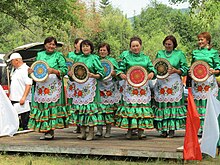
In the
Kazan Tatars are descendants of the Tatars of the Kazan Kingdom of the Kipchak Horde. — "Alphabetical list of peoples living in the Russian Empire in 1895"[1]
Kazan Tatars got their name from the main city of Kazan—and it is so called from the Tatar word Kazan, the cauldron, which was omitted by the servant of the founder of this city, Khan Altyn Bek, not on purpose, when he scooped water for his master to wash, in the river now called Kazanka. In other respects, according to their own legends, they were not of a special tribe, but descended from the fighters who remained here [in Kazan] on the settlement of different generations and from foreigners attracted to Kazan, but especially Nogai Tatars, who all through their union into a single society formed a special people.
— Carl Wilhelm Müller. "Description of all the peoples living in the Russian state,.." Part Two. About the peoples of the Tatar tribe. S-P, 1776, Translated from German.[40]
— Johann Gottlieb Georgi. Description of all the peoples living in the Russian state : their everyday rituals, customs, clothes, dwellings, exercises, amusements, faiths and other memorabilia. Part 2 : About the peoples of the Tatar tribe and other undecided origin of the Northern Siberian. — 1799. page 8 [41]
Also in Kazan there is a famous "Kaban Lake" similar to the name of the "Kuban River", which translates from Nogai as "overflowing".
The main now central Bauman Street that leads to the Kremlin is one of the oldest streets in Kazan. In the era of the Kazan Khanate, it was called the Nogai district. Nogai daruga is a conditional territory, the possessions of which are controlled by the Nogai Horde, they were run by foremen beki:
- Alibai Murzagulov, in 1773 the foreman of the Nogaiskaya daruga (administrative territory - district)
- Kinzya Arslanov foreman of the Bushmas-Kipchak parish of the Nogaiskaya daruga (administrative territory)
- Yamansary Yapparov foreman of the Suun-Kypsak parish of the Nogaiskaya daruga (administrative territory)
The Tatar Queen Syuyumbike, who was the daughter of the Nogai biya, also testifies to the Nogai roots of the Kazan Tatars. And this is also confirmed by the Khans of the Kazan Khanate:
- Ulu-Muhammad Khan, son of Ichkile Hasan-oglan (1438–1445), former khan of the Golden Horde.
- Mamuk (Tyumen tatar) Khan (1496–1497).
- Shah-Ali Khan, son of Kasimov tatarSheikh-Auliyar Sultan (1519–1521, 1546, 1551–1552).
- Sahib-Giray Khan, son of Crimean tatar Khan Mengli Giray (1521–1524, 1524–1531, 1536–1546, 1546–1549).
- Utyamysh-Giray Nogai tatar Khan, son of Safa-Giray Khan (1549–1551).
- Yadygar-Muhammad Khan, son of Kasimov tatarKhan of Astrakhan (1552).
- Ali-Akram Khan (Nogai dynasty) (1553–1556).
The large coat of arms of Tsar Ivan IV the Terrible testifies that the Tatars of the Kazan Khanate and the Bulgars of the Volga Bulgarian land are different peoples and territories with different coats of arms.
Forming
The formation of the Kazan Tatars occurred only in the Golden Horde in the XIV - first half of the XV century. from the Central Asian Turkic-Tatar tribes that arrived with the Mongols and appeared in the Lower Volga region in the XI century. Kipchaks (Polovtsians). There were only minor groups of Kipchak tribes on the Bulgarian and Cheremis land, and there were very few of them on the territory of the future Kazan Khanate. But during the events of 1438–1445, associated with the formation of the Kazan Khanate, together with Khan Uluk-Muhammad, about 40 thousand Tatars arrived here at once. Subsequently, Tatars from Astrakhan, Azov, Crimea, Akhtubinsk and other places moved to the Kazan Khanate. The Arab historian Al-Omari (Shihabuddin al-Umari) wrote that, having joined the Golden Horde, the Cumans moved to the position of subjects. The Tatar-Mongols who settled on the territory of the Polovtsian steppe gradually mixed with the Polovtsians. Al-Omari concludes that after several generations, the Tatars began to look like Polovtsy: "as if from the same (with them) kind," because they began to live on their lands.
Finally in the end of the 19th century; although the name
Some Volga Tatars speak different dialects of the
- Volga River, in Tatarstan.
- The Western Tatars have their capital in the town of Qasím (Kasimov, Russian: Касимов) in Ryazan Oblast, with a Tatar population of 1100.[citation needed]
A minority of Christianized Volga Tatars are known as Keräşens.
The Volga Tatars used the Turkic
Outside of Tatarstan, urban Tatars usually speak
and western Siberia) and other languages in a worldwide diaspora.In the 1910s the Volga Tatars numbered about half a million in the
Most Kazan Tatars practice Islam. The Kazan Tatars speak Kazan (normal) Tatar language, with a substantial amount of Russian and Arabic loanwords.
Before 1917, polygamy was practiced[57][citation needed] only by the wealthier classes and was a waning institution.[39]
Astrakhan Tatars
The Astrakhan Tatars (around 80,000) are a group of Tatars, descendants of the
Crimean Tatars

Crimean Tatars are a relatively recent ethnic layer in Crimea. They displaced the Greek-speaking Byzantines and the remnants of the Gothic populations that settled there in the 3rd century AD. Crimean Tatars formed as a distinct identity during the 13th–17th centuries. They incorporated many invading Turkic people, including the Cumans that settled in Crimea in the 10th century and other contributions from the peoples who inhabited Crimea before (Greeks, Scythians, and Goths).[58]
At the beginning of the 13th century, Crimea, where the majority of the population was already composed of a
In 1441, an embassy from the representatives of several strongest clans of Crimea, including the Golden Horde clans Shırın and
Due to the oppression by the Russian administration, the Crimean Tatars were forced to immigrate to the Ottoman Empire. In total, from 1783 till the beginning of the 20th century, at least 800 thousand Tatars left Crimea. In 1917, the Crimean Tatars, in an effort to recreate their statehood, announced the Crimean People's Republic—the first democratic republic in the Muslim world, where all peoples were equal in rights. The head of the republic was the young politician Noman Çelebicihan. However, a few months later the Bolsheviks captured Crimea, and Çelebicihan was killed without trial and thrown into the Black Sea. Soon in Crimea, Soviet power was established.
Through the fault of the Soviet government, which exported bread from Crimea to other regions of the country, in


Nowadays, the Crimean Tatars comprise three sub-ethnic groups:
- the Tats (not to be confused with Tat people, living in the Caucasus region) who used to inhabit the Crimean Mountains before 1944
- the Yalıboyluwho lived on the southern coast of the peninsula
- the Noğayswho used to live in the northern part of the Crimea
Crimean Tatars in Dobruja
Some Crimean Tatars have lived in the territory of today's
Dobrujan Tatars have been present in Romania since the 13th century.
Lipka Tatars
The Lipka Tatars are a group of
From the 13th to 17th centuries various groups of Tatars settled and/or found refuge within the Polish–Lithuanian Commonwealth. The Grand Dukes of Lithuania especially promoted the migrations because of the Tatars' reputation as skilled warriors. The Tatar settlers were all granted

Various estimates of the Tatars in the Commonwealth in the 17th century place their numbers at about 15,000 persons and 60 villages with mosques. Numerous royal privileges, as well as internal autonomy granted by the monarchs, allowed the Tatars to preserve their religion, traditions, and culture over the centuries. The Tatars were allowed to
Although by the 18th century the Tatars had adopted the local language, the Islamic religion and many Tatar traditions (e.g. the sacrifice of bulls in their mosques during the main religious festivals) survived. This led to the formation of a distinctive
About 5,500 Tatars lived within the inter-war boundaries of Poland (1920–1939), and a Tatar cavalry unit had fought for the country's independence. The Tatars had preserved their cultural identity and sustained a number of Tatar organisations, including Tatar archives and a museum in Vilnius.
The Tatars suffered serious losses during World War II and furthermore, after the border change in 1945, a large part of them found themselves in the Soviet Union. It is estimated that about 3,000 Tatars live in present-day Poland, of which about 500 declared Tatar (rather than Polish) nationality in the 2002 census.[citation needed] There are two Tatar villages (Bohoniki and Kruszyniany) in the north-east of present-day Poland, as well as urban Tatar communities in Warsaw, Gdańsk, Białystok, and Gorzów Wielkopolski. Tatars in Poland sometimes have a Muslim surname with a Polish ending: Ryzwanowicz; other surnames adopted by more assimilated Tatars are Tatara or Tataranowicz or Taterczyński, which literally mean "son of a Tatar".
The Tatars played a relatively prominent role for such a small community in the Polish–Lithuanian Commonwealth military as well as in Polish and Lithuanian political and intellectual life.[citation needed] In modern-day Poland, their presence is also widely known, due in part to their noticeable role in the historical novels of Henryk Sienkiewicz (1846–1916), which are universally recognized in Poland. A number of Polish intellectual figures have also been Tatars.
A small community of Polish-speaking Tatars settled in Brooklyn, New York City, in the early 20th century. They established a mosque that remained in use as of 2017[update].[80]
Siberian Tatars

The Siberian Tatars occupy three distinct regions:
They originated in the agglomerations of various indigenous North Asian groups which, in the region north of the Altay, reached some degree of culture between the 4th and 5th centuries, but were subdued and enslaved by the Mongols.[39] The
Population of Tatars, 1926–2021
| Census | 1926 | 1939 | 1959 | 1970 | 1979 | 1989 | 2002 | 2010 | 2021 |
|---|---|---|---|---|---|---|---|---|---|
| Population | 3,926,053 | 3,682,956 | 4,074,253 | 4,577,061 | 5,055,757 | 5,522,096 | 5,554,601 | 5,310,649 | 4,713,669 |
| Percentage | 3.89% | 3.40% | 3.47% | 3.52% | 3.68% | 3.75% | 3.87% | 3.87% | 3.61% |
Gallery
- Flags
- Flags
-
Flag of the Nogai Horde
-
Flag of the Crimean Tatars
-
Flag of Tatarstan
-
Flag of theKazan Khanate
-
Flag of the Crimean Khanate[82]
-
Golden Horde flag
-
Tartary flag
- Pictures
- Pictures
-
Crimean Tatar men and boys
-
Crimean Tatar women, early 1900s
- Paintings
- Paintings
-
Tatar elder and his horse
-
Tatar woman
-
Crimean Tatar woman
-
Tatar woman
-
Crimean Tatar woman
-
Tatar woman
-
Crimean Tatar shepherd-boy
-
Lithuanian Tatars of Napoleonic army
-
Crimean Tatar family, 1840
-
Crimean Tatar girl from Kapsikhor
-
Daghestani Tatar elder
-
Tatar Queen Söyembikä and
her son, Ötemish Giray Khan -
Tatar family in 1843
-
Dance of Crimean Tatars. Crimea, 1856.
-
Crimean Tatar family and a mullah
-
Crimean Tatar princess in 1682
-
Tatar child ca. 19th century
-
Tatars' raid on Moscow
-
Recovery of Tatar captives
-
Crimean Tatar squadrone of the Russian empire
-
Tatar costumes
-
Crimean Tatar elder inviting guests
-
Tatar horsemen
-
Crimean Tatar's national dance
-
Tatars in the vanguard of the Ottoman army
-
Kazan Tatars 1862
- Language
- Language
-
Quran of the Tatars
-
Cover page of TatarYana imlabook, printed with Separated Tatar language in Arabic script in 1924
-
A Tatar alphabet book printed in 1778. Arabic script is used, Cyrillic text is in Russian. Хальфин, Сагит. Азбука татарского языка. — М., 1778. — 52 с.
-
Tatar sign on amadrasah in Nizhny Novgorod, written in both Arabicand Cyrillic Tatar scripts
See also
- List of Tatars
- Lists of battles of the Mongol invasion of Europe
- Tatarophobia
- Tatar name
- Uhlan
- Serving Tatars
References
- ^ "Putin's Power Play? Tatarstan Activists Say Loss Of 'President' Title Would Be An Existential Blow". Radio Free Europe. 19 October 2021. Retrieved 9 December 2021.
- ^ "Tatars facts, information, pictures – Encyclopedia.com articles about Tatars". Encyclopedia.com. Retrieved 6 December 2017.
- ^ a b "Tatar". Joshua Project. Retrieved 29 January 2021.
- ^ a b c Henryk Jankowski. Crimean Tatars and Noghais in Turkey // a slightly edited version of the paper with the same title that appeared in Türk Dilleri Arastirmalari [Studies on the Turkic Languages] 10 (2000): 113–131, distributed by Sanat Kitabevi, Ankara, Turkey. A Polish version of this paper was published in Rocznik Tatarów Polskich (Journal of Polish Tatars), vol. 6, 2000, 118–126.
- ^ a b Мусафирова, О.. "Мустафа, сынок, прошу тебя — прекрати…". Novaya Gazeta. Retrieved 29 January 2021.
- ^ a b Пашаев, Осман (18 November 2002). "В Турции проживают до 6 миллионов потомков крымских татар". podrobnosti. Retrieved 7 January 2022.
- ^ "Afghanistan Recognizes Long Forgotten Ethnic Tatar Community". www.rferl.org. Retrieved 13 December 2023.
- ^ "کنگره جهانی تاتارها: یک هزار دانشجوی تاتار افغانستان به چین و هند میروند". افغانستان اینترنشنال (in Persian). 13 December 2023. Retrieved 13 December 2023.
- ^ "ВПН-2010". www.gks.ru. Retrieved 7 January 2022.
- ^ "About number and composition population of Ukraine by data All-Ukrainian census of the population 2001". Ukraine Census 2001. State Statistics Committee of Ukraine. Retrieved 27 September 2012.
- ^ "Крымские татары". Great Russian Encyclopedia (in Russian). Retrieved 29 January 2021.
- ^ "Численность населения Республики Казахстан по отдельным этносам на начало 2021 года" [The population of the Republic of Kazakhstan by individual ethnic groups at the beginning of 2021]. stat.gov.kz. Retrieved 20 June 2021.
- ^ In Turkey, the census does not indicate the nationality, because all residents of Turkey are considered Turks, so it is impossible to name at least the approximate number of Turkish citizens, considering themselves as Crimean Tatars.
- ^ "Afghanistan Recognizes Long Forgotten Ethnic Tatar Community". Radiofreeeurope/Radioliberty. Retrieved 28 April 2021.
Community leaders estimate there are up to 100,000 ethnic Tatars in Afghanistan.
- ^ Asgabat.net-городской социально-информационный портал :Итоги всеобщей переписи населения Туркменистана по национальному составу в 1995 году. Archived 13 March 2013 at the Wayback Machine
- ^ "National composition of the population" (PDF). Archived from the original (PDF) on 13 November 2013. Retrieved 29 January 2021.
- ^ "Archived copy". Archived from the original on 30 November 2012. Retrieved 31 January 2021.
{{cite web}}: CS1 maint: archived copy as title (link) - ^ "Recensamant Romania 2002". Agentia Nationala pentru Intreprinderi Mici si Mijlocii (in Romanian). 2002. Archived from the original on 13 May 2007. Retrieved 5 August 2007.
- ^ "Tatar in United States". Joshua Project. 23 March 2021. Retrieved 23 March 2021.
- ^ "Tatars In Belarus". Radio Free Europe. 12 August 2010. Retrieved 31 October 2021.
- ^ Рушан, Лукманов (16 May 2018). "Vasil Shaykhraziev met with the Tatars of France | Всемирный конгресс татар". Retrieved 31 October 2021.
- ^ "Rustam Minnikhanov meets representatives of the Tatar Diaspora in Switzerland". President of Republic of Tatarstan. Retrieved 5 August 2021.
- ^ "Regional Autonomy for Minority Peoples". Ministry of Foreign Affairs of the People's Republic of China. Archived from the original on 17 October 2006. Retrieved 6 September 2006.
- ^ "Census Profile, 2016 Census – Canada [Country] and Canada [Country]". 8 February 2017. Retrieved 25 March 2018.
- ^ "Ludność. Stan i struktura demograficzno-społeczna – NSP 2011" (PDF) (in Polish). Retrieved 29 October 2021.
- ^ "National Statistical Institute". www.nsi.bg. Retrieved 5 August 2021.
- ^ "Suomen tataareja johtaa pankkiuran tehnyt ekonomisti Gölten Bedretdin, jonka mielestä uskonnon pitää olla hyvän puolella". Retrieved 6 March 2021.
- ^ "Статьи на исторические темы". www.hrono.ru. Retrieved 21 April 2018.
- ^ "Archived copy". Archived from the original on 16 August 2018. Retrieved 27 April 2018.
{{cite web}}: CS1 maint: archived copy as title (link) - ^ "Президент РТ". Archived from the original on 5 March 2016. Retrieved 28 April 2018.
- ^ "RL0428: RAHVASTIK RAHVUSE, SOO JA ELUKOHA JÄRGI, 31. DETSEMBER 2011". stat.ee. Retrieved 16 November 2021.
- ^ "Адас Якубаускас: Я всегда говорю крымским татарам не выезжайте, оккупация не вечна". espreso.tv. Retrieved 31 January 2021.
- ^ Как крымские татары оказались в Литве 600 лет назад? | Новости и аналитика : Украина и мир : EtCetera
- ^ Национальный состав населения Литвы. Перепись 2011.
- ^ Paul Goble (20 June 2016). "Volga Tatars in Iran Being Turkmenified". Jamestown. Retrieved 27 February 2022.
- ^ Old Turkic: 𐱃𐱃𐰺, romanized: Tatar)
- ^ Tatar in the Collins English Dictionary
- ^ "Tatar – people". Archived from the original on 30 July 2017. Retrieved 28 February 2016.
- ^ a b c d One or more of the preceding sentences incorporates text from a publication now in the public domain: Kropotkin, Peter; Eliot, Charles (1911). "Tatars". In Chisholm, Hugh (ed.). Encyclopædia Britannica. Vol. 28 (11th ed.). Cambridge University Press. pp. 448–449.
- ^ a b "Татары Евразии: своеобразие генофондов крымских, поволжских и сибирских татар". Вестник Московского Университета. Серия 23. Антропология (3): 75–85. 20 January 2024.
- ^ a b "Внешний вид (фото), Оглавление (Содержание) книги Еникеева Г.Р. "По следам чёрной легенды"".
- ^ Thomas Riha, Readings in Russian Civilization, Volume 1: Russia Before Peter the Great, 900–1700, University of Chicago Press (2009), p. 186
- ^ Baskakov: Русские фамилии тюркского происхождения (Russian surnames of Turkic origin) (1979)
- ^ citing a letter to St Louis of Frances dated 1270 which makes the connection explicit, "In the present danger of the Tartars either we shall push them back into the Tartarus whence they are come, or they will bring us all into heaven."
- ^ Wedgwood, Hensleigh (1855). "On False Etymologies". Transactions of the Philological Society (6): 72.
- ISBN 978-5-903833-93-1. quote (p. 160-161): "Ныне татарами называют этнические группы, имеющие монгольское и тюркское происхождение. Из них так называемые «девять татар» приняли участие в этнокультурном развитии монголов. Татары эти, как племя, сформировались, видимо, в период существования на территории Монголии Тюркского каганата (VI–VIII вв.); помимо монгольского компонента, в процессе этногенеза приняли участие и тюркские, о чем свидетельствует этнический состав татар. В этот период монголами управляли тюрки, которые со временем омонголились. [...] Что же касается сибирских татар и татар, проживающих на территории между Азией и Европой, то они являются выходцами из тюрок. Название татар они получили позднее и не имеют родовой связи с монгольскими («девятью татарами». — А.О.) татарами."
- ^ https://www.medgen-journal.ru/jour/article/view/2212/0?locale=en_US The structure of the gene pool of Tomsk Tatars according to Y-chromosome markers
- doi:10.22378/2313-6197.2019-7-3.545-567. Archived from the originalon 20 July 2021. quote (p 563): "Regarding the Volga Tatar people of today, it appears they took on the endonym of their Mongol conquerors when they overran the Dasht-i-Kipchak. It was preserved as the prevailing ethnonym in the subsequent synthesis of the Mongols and their more numerous Turkic subjects who ultimately subsumed their conquerors culturally and linguistically as al-Umari noted by the fourteenth century [32, p. 141]. I argue that the name 'Tatar' was adopted by the Turkic peoples in the region as a sign of having joined the Tatar conquerors – a practice which Friar Julian reported in the 1230s as the conquest unfolded. The name stands as a testament to the survivability and adaptability of both peoples and ethnonyms. It became, as Sh. Marjani stated, their 'proud Tatar name.'"
- ^ Татары (in Russian). Энциклопедия «Вокруг света». Retrieved 29 May 2014.
- Spruce-fir Taigaforests in Russian language: черневая тайга
- ^ Гаркавец А. Н. Кыпчакские языки. — Алма-Ата: Наука, 1987. — С. 18.
- ISBN 978-5-9690-0112-1
- ^ Maħmūd al-Kašğari. "Dīwān Luğāt al-Turk". Edited & translated by Robert Dankoff in collaboration with James Kelly. In Sources of Oriental Languages and Literature. Part I. (1982). pp. 82–83
- ^ Akhatov G. "Tatar dialectology". Kazan, 1984. (Tatar language)
- ^ also rarely called Crimean language or even more rarely Crimean Turkic
- ^ Сравнительно-историческая грамматика тюркских языков. Региональные реконструкции/Отв. ред. Э.Р. Тенишев. – М. Наука. 2002. – 767 с. стр. 732, 736–737
- ^ "westmifflinmoritz.com" (PDF). www.westmifflinmoritz.com.
- ^ "История этногенеза крымских татар | Ана юрт". ana-yurt.com. Retrieved 18 December 2019.
- ISBN 5-7780-0216-5.
- ^ a b c Gayvoronsky, 2007
- ISBN 5-244-00641-X.
- ^ Halil İnalcik, 1942 [page needed]
- ^ Great Russian Encyclopedia: Верховная власть принадлежала хану – представителю династии Гиреев, который являлся вассалом тур. султана (официально закреплено в 1580-х гг., когда имя султана стало произноситься перед именем хана во время пятничной молитвы, что в мусульм. мире служило признаком вассалитета)
- ^ Kochegarov (2008), p. 230
- ^ J. Tyszkiewicz. Tatarzy na Litwie i w Polsce. Studia z dziejow XIII-XVIII w. Warszawa, 1989. p. 167
- ^ Davies (2007), p. 187; Torke (1997), p. 110
- ^ Ahmad III, H. Bowen, The Encyclopaedia of Islam, Vol. I, ed. H.A.R. Gibb, J.H. Kramers, E. Levi-Provencal and J. Shacht (E.J.Brill, 1986), 269.
- ^ He was claiming: "Such a strong and merciless enemy as Moscow, falling on its feet, fell into our hands. This is such a convenient case when, if we wish so, we can capture Russia from one side to the other, since I know for sure that the whole the strength of the Russian army is this army. Our task now is to pat the Russian army so that it cannot move anywhere from this place, and we will get to Moscow and bring the matter to the point that the Russian Tsar would be appointed by our padishah." (Halim Giray, 1822)
- ^ Halim Giray, 1822 (in Russian)
- ^ Tucker, Spencer C. (2010). A Global Chronology of Conflict: From the Ancient World to the Modern Middle East, Vol. II. ABC-CLIO. p. 732
- ^ Zarubin: Без победителей: из истории Гражданской войны в Крыму, 2008, p. 704
- ^ Расстрел 17 апреля 1938 года. RFEL
- ^ Zmerzly: Политические репрессии среди крымскотатарских преподавателей Крымского государственного университета им. Фрунзе
- ^ Abibullayeva Крымскотатарская интеллигенция – жертва политических репрессий 1920–ых – 1930–ых
- ^ Hayali: Крымские татары в репрессивно-карательной политике в Крымской АССР
- ^ Human Rights Watch, 1991, p. 34
- ^ Klaus Roth, Asker Kartarı, (2017), Cultures of Crisis in Southeast Europe: Part 2: Crises Related to Natural Disasters, to Spaces and Places, and to Identities (19) (Ethnologia Balkanica), p. 223
- ^ Robert Stănciugel and Liliana Monica Bălaşa, Dobrogea în Secolele VII–XIX. Evoluţie istorică, Bucharest, 2005, p.147
- ^ a b "Lietuvos totoriai ir jų šventoji knyga – Koranas". Archived from the original on 29 October 2007.
- ^ Amid Tatar Renaissance In Europe, An American Mosque Turns To Its Roots – "A Lipka Tatar—a Muslim ethnic group native to the Baltic region—Jakub Szynkiewicz was selected to be Poland's first mufti in 1925, around the time that his community's U.S. diaspora was moving into the very mosque in Brooklyn where his portrait still hangs."
- ^ Siberian Tatars Archived 27 February 2002 at the Wayback Machine
- ^ Pierre Duval: Le monde ou La géographie universelle. (1676)
Further reading
- Karagöz, Erkan (2021). İdil-Ural (Tatar ve Başkurt) sihirli masalları üzerine karşılaştırmalı motif çalışması: Aktarma – motif tespiti (motif - İndex of Folk-Literature’a göre) – motif dizini (in Turkish). Vol. 1. Ankara: Atatürk Kültür Merkezi Başkanlığı. pp. 143-586 (Tatar tales). ISBN 978-975-17-4742-6.
External links
- Kropotkin, Peter Alexeivitch (1888). . Encyclopædia Britannica. Vol. XXIII (9th ed.). pp. 70–71.
- Kropotkin, Peter Alexeivitch; Eliot, Charles Norton Edgcumbe (1911). . Encyclopædia Britannica. Vol. 26 (11th ed.). pp. 448–449.
- The American Turko-Tatar Association



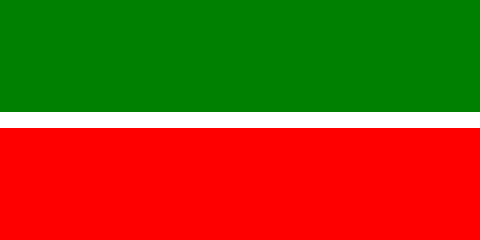

![Flag of the Crimean Khanate[82]](http://upload.wikimedia.org/wikipedia/commons/thumb/9/90/Coat_of_arms_of_Crimean_Khanate.svg/204px-Coat_of_arms_of_Crimean_Khanate.svg.png)









